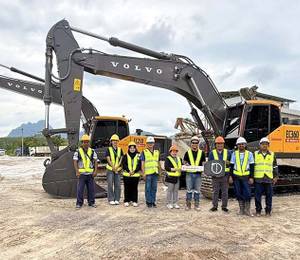The Toro LH307 loader from Sandvik has been upgraded to deliver greater productivity on the jobsite. The former 6.7 t machine now carries 7 t when equipped with a standard 3 cu m bare lip bucket. Other new options include Sandvik integrated weighing system (IWS) and traction control, both already available for the larger Sandvik loaders.
The IWS integrated weighing system measures the payload when lifting the boom, as well as the number of buckets filled during a shift, and records the results to My Sandvik Digital Services Knowledge Box. Payload monitoring assists in maximising productivity by optimising loads, reducing overloading and helping to identify training needs. The traction control system minimises wheel slippage when penetrating to the muck pile and filling the bucket, extending tyre lifetime and decreasing rubber waste.
As part of upgrading the 7-t loader, specific attention has been given to digitalisation readiness. The machine has benefitted from control system upgrades, such as a 7-in touch screen colour display for the operator as standard. The loader is designed to be used with AutoMine, Sandvik advanced mining automation system, for increased safety, productivity and reduced cost.
AutoMine integration can be achieved by ordering an optional on-board package for the new loader for immediate autonomous use, or by selecting the automation readiness option, allowing easy retrofitting of AutoMine later in the loader’s lifetime. Sandvik OptiMine, also available as an option, provides descriptive and predictive insights to improve operations and data analytics.
To serve varying customer and country specific needs, two 160-kW engine alternatives are offered. The standard engine is an 8-l Stage III A, capable of operating on diesel fuels with up to 3,000 ppm sulphur content, whereas the optional Stage IV requires ultra-low sulphur diesel fuel.
The Stage III A engine also has an optional passive diesel particulate filter (DPF) exhaust reduction system. In addition, both engines can use paraffinic fuel to reduce emissions and consumption of fossil fuel, thereby meeting EN 15940 requirements.












